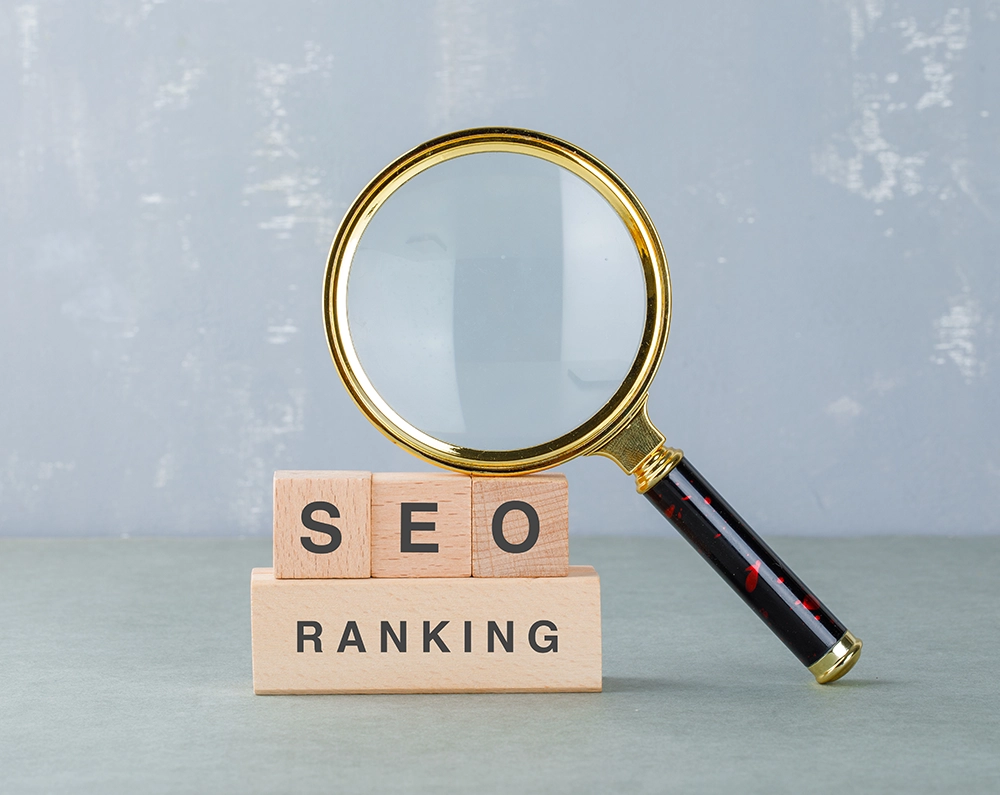Suppose you’re running a local business like a bakery, HAVC service, auto repair shop, or yoga studio. Now imagine:
If a person nearby pulls out their phone and searches for “best coffee near me” or “emergency plumber open now.”
They aren’t browsing casually—they’re intent-rich, action-ready signals from customers looking to call, visit, or buy.
And if your business isn’t showing up in these searches? You’re missing out on a goldmine of opportunities that your competitors are leveraging.
This guide is all about how to fix that. We’ll delve into what local SEO is, how local SEO optimization works, and most importantly—how to rank for near me keywords without wasting time or money on stuff that doesn’t move the needle.
What is local SEO?
Local SEO (short for Local Search Engine Optimization) is the process of improving your online presence so people nearby can find you when they search for services or products like yours.
So, if someone searches for an “emergency vet near me” and you’re an emergency vet—that’s your moment.
If you’ve done your local SEO optimization right, you’ll show up right when and where it matters.
We’re not just talking about your website here. We’re talking Google Maps, Google Business Profile (formerly GMB), local directories, mobile search—basically anywhere someone can discover your business based on where they are. It is your ticket for visibility and revenue.
Why does SEO near me matter so much?
Let’s put it this way: you’re not trying to rank for “best yoga mats” in the whole country. You’re trying to rank for “yoga classes near me” in your part of town.
That difference? Huge.
Here’s what makes “near me” searches gold:
- They're specific (people know what they want)
- They’re local (they want it now, and are close by)
- They're mobile-driven (think walking or driving somewhere)
- They want to deal with a credible business (Ranking for local terms, positive reviews, and appearing in the Local Pack builds trust and visibility.)
If you don’t need national traffic. You need local people walking through the door. That’s the whole point of SEO local—show up where it counts.
How to rank for near me keywords?
Let’s break this down into practical, no-fluff steps. Some of these you can knock out in an hour. Others take time. But they all move you toward better local SEO rankings.
Step 1: Get your Google Business Profile in shape
If you’re not on Google Business Profile, you’re basically invisible.
Here’s the checklist:
- Make sure your business name, address, and phone number are consistent with what’s on your site
- Use a real local address (no P.O. boxes, no fake locations)
- Add the right categories (be specific)
- Upload photos—of your storefront, your work, your team
- Respond to reviews (good or bad—doesn’t matter)
- Keep your hours updated
Google pulls “near me” results heavily from this listing. This is your first—and maybe most important—step in local SEO optimization.
Step 2: Nail your NAP info (Name, Address, Phone)
Sounds boring, but hear this: if your business name, address, or phone number is inconsistent across listings, it hurts your local SEO.
Your NAP should be exactly the same:
- On your website
- On your Google listing
- On social media like Facebook, Instagram
- On local directories like Yelp, Bing Places, etc.
It’s simple, but it matters. Google needs to know you are who you say you are.
Step 3: Add location-based pages (if it makes sense)
Let’s say you run a plumbing business serving multiple areas—Nashville, Franklin, Brentwood.
Instead of just one “Services” page, create separate location pages:
- Plumbing Services in Nashville
- Emergency Plumber in Brentwood
- Water Heater Repair in Franklin
Use local keywords (in titles, headers, etc), unique content (testimonials, landmarks), and a LocalBusiness schema for each page.
This makes search engines and users feel that you’re truly local to them, boosting your visibility in “SEO near me” searches.
Step 4: Use local keywords the right way
You don’t need to stuff “near me” into every sentence. But you should include phrases people actually search, like:
- “AC repair near me”
- “family dentist in Chicago”
- “dog groomer open now near downtown Atlanta”
This is part of understanding how to rank for near me keywords—you want your pages to match what people are literally typing into Google.
Put these naturally in your:
- Page titles
- Meta descriptions
- Headings
- Content
- Alt text (for images)
But again—keep it human. Nobody likes keyword stuffing. Not even Google.
The role of reviews in local SEO rankings
People trust reviews. Google does too. The quantity, quality, and recency of your reviews all affect how high you show up in local SEO near me results.
What you can do:
- Ask happy customers to leave a review, make it easy for them (e.g., QR code, direct link after service)
- Reply to every review, even if it’s just a quick “Thanks!”
- Don’t fake it. Google knows. People know.
It’s not about having a perfect 5.0 rating. It’s about showing that you’re active, responsive, and trusted by real people in your area.
Mobile-friendly = Local-friendly
Most “near me” searches happen on phones. If your website looks weird on mobile, loads slow, or has buttons people can’t easily tap—it’s killing your local SEO optimization.
Run your site through Google’s Mobile-Friendly Test. Fix what’s broken. Use bigger fonts. Compress images. Keep forms short.
Google’s watching. So are your customers.
Structured data (aka schema) for local businesses
Okay, slight technical detour here—but it’s worth it.
You can add a little code (called schema markup) to your website that helps Google understand your business better. It’s not visible to visitors, but it tells search engines things like:
- Your work hours
- Your service area
- Your reviews
- Your coordinates
- And even GPS coordinates
Think of it as whispering to Google, “Hey, here’s everything you need to know to rank me properly in local SEO near me searches.”
Don’t know how to do it? Ask your developer or use a plugin. . It’s one of those things that feels small but adds up.
Build local backlinks (without begging)
Backlinks still matter. A lot. But when it comes to local SEO, it’s not about volume—it’s about relevance.
A link from your local Chamber of Commerce is more significant than dozens of links from unrelated or out‑of‑state websites.
Here’s how to build local links:
- Sponsor a community event
- Get listed in local directories
- Partner with nearby businesses
- Host PR-worthy events and get featured in local news
If you’re thinking long-term, this stuff really helps build your local SEO rankings over time.
Don’t ignore social signals
Your social media profiles may not directly improve local SEO, but they support your credibility. Especially if they’re active, location-tagged, and consistent with your NAP info.
Post photos from your location. Tag your city. Mention your neighborhood. Social content with a local focus tells Google, “Hey—we’re relevant here.”
And let’s be honest: your potential customers are checking you out on Instagram or Facebook before they ever call you. Make sure what they see builds trust.
FAQs about local SEO
Do I need a blog for local SEO?
- “Top 5 Winter HVAC Issues in Colorado Springs”
- “How to Pick a Preschool in Scottsdale”
How fast can I see results?
Depends. If your Google Business Profile is a mess and you fix it, you could see results in days. For website-related local SEO optimization, it might take weeks. Either way, consistency beats speed here.
Should I run ads too?
Sure—if you’ve got the budget. Google Ads can help you show up in the “near me” section today. But ideally, you want to show up organically and through ads. That’s the sweet spot.
Wrap-up: Let’s talk about local SEO like normal people
Local SEO doesn’t have to be overwhelming.
You’re just making sure your business:
- Can be found
- Looks legit
- Answers people’s needs when they’re nearby and ready to act
It’s not about chasing algorithms. It’s about showing up when someone in your area types “help, I need this now.”
So, whether you’re a one-person service business or a team of fifty—investing in your near me SEO strategy is one of the smartest moves you can make.
Also read: SEO vs. SEM: What’s The Difference
Your near me SEO strategy cheat sheet
-Claim and polish your Google Business Profile
-Ensure your NAP is consistent everywhere
-Use location pages if you serve more than one area
-Add “near me” phrases naturally on your website
-Collect (and respond to) reviews regularly
-Make sure your site works on mobile
-Add schema markup
-Earn links from real, local sources
-Show up on social with a local vibe
You don’t have to do it all today. But start somewhere. This stuff compounds over time.
And hey—if you’re too busy running your actual business?
That’s when it might be worth bringing in a sharp, local-minded online marketing agency that knows how to get results without bloated retainers or vague promises.
Because when it comes to SEO local efforts, what you don’t do might be what holds you back.





